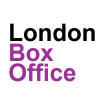 Analysing the opening moments of any musical tells you a lot about the writer's intentions for the evening to come. Here are five examples that illustrate how five very different shows set out their stall and manage your expectations from the start.
Analysing the opening moments of any musical tells you a lot about the writer's intentions for the evening to come. Here are five examples that illustrate how five very different shows set out their stall and manage your expectations from the start.
1. THE BIG BANG. Willkommen! From CABARET.
To my mind this song is the perfect way to start the show with a "big bang", the industry name given to this type of opening number. Infectiously catchy and building to an exhilarating climax it pins you to your seat breathless to discover what’s to come. But it’s job is far more complex than that, without our noticing it plunges us into the very alien world that will be our setting.
Even if you have no prior knowledge of Pre-war Germany by the end of this number the lyrics have conveyed the fact we’re in Europe, the rhythms and brassy orchestrations tell us it’s a world that’s powered by a down and dirty sexuality, and it provides the creative team and the star playing the M.C. (The Master of Ceremonies at the Kit Kat Club in Weimar Berlin) a great opportunity to be sleazy, naughty and a little bit dangerous.
There are many delicious performances of the song on YouTube, from big stage productions to intimate night club scale renditions ( when it works best) but this version fronted by Broadway star Norbert Leo Butz is my favourite. Traditionally the MC is either mysteriously androgynous (Joel Grey in the film) or playfully camp (Alan Cumming in the last Broadway revival) but Butz brings a dangerous sexuality to it that’s both scary and irresistible.
2. THE SLOW HELLO. Oh What a Beautiful Morning from OKLAHOMA.
There were many, many innovative things about the original production of this masterpiece by Rodgers and Hammerstein but the first shocker on opening night back in 1943 was the gentle first song.
The show dared to dispense with the traditional big, flashy, full-company, opening number and substituted a gently exhilarating solo in which a simple man is at peace and happy with his world as he looks forward to meeting his girl.
The pair went on to use the technique, which has become known as "The Slow Hello", to establish Nelly’s romantic inclinations at the beginning of SOUTH PACIFIC and Maria’s high spirits at the top of THE SOUND OF MUSIC.
Here’s the incomparable Hugh Jackman melting our hearts right from the start of OKLAHOMA!
3. THE PEASANTS ON THE GREEN. Good Morning Baltimore from HAIRSPRAY.
The phrase “peasants on the green” refers to the convention in operetta of bringing the curtain up on a stage full of townsfolk singing about where they live.
It’s very old fashioned, we still use it to start off most pantomimes, but it can also be subverted to powerful effect in contemporary musical theatre, as demonstrated by the gorgeous opening number of HAIRSPRAY, in which our young heroine guides us through a typical morning from her life.
By the time it finishes the pastiche Motown rhythms and orchestrations have transported us back to the early 1960s, the lyrics establish Baltimore is a dump, and we’ve plenty of time to get to know central character, Tracy and her hopes and dreams.
We also learn that the show will have a gentle sense of humour and the creative team had a chance to expand our perspective from a young woman waking up alone to the bustle of the world where she exists.
4. COMING OUT OF THE DARK. Look Down from LES MISERABLES.
There’s no chance to fiddle with your coat and get comfy at the start of LES MIS. Right from the first notes, that hit us like a sledge hammer, we’re plunged into a world of misery and grind where we meet our growling hero brooding on injustice. We’re immediately hooked. How will this man escape from the exhilaratingly dark and gloomy start?
Check out the opening of SWEENEY TODD or OLIVER! for other examples of this technique, known as “coming out of the dark”, in action.
5. THE PRIMER. Tradition from FIDDLER ON THE ROOF.
This is possibly the greatest opening number ever written.
Consider how much you know by the end. You’ve met and like our leading character, you’ve been introduced to the haunting and evocative nature of Yiddish music PLUS you’ve had a class on the different traditions of a culture that you’ll need to understand to follow the plot.
And it’s all so enjoyable you don’t even notice you’re being lectured.




 Due to the Covid crisis we may now have to wait until next year to see Imelda Staunton play the title role in this gloriously sunny classic musical, but here are a few things you may or may not know about the original stage show.
Due to the Covid crisis we may now have to wait until next year to see Imelda Staunton play the title role in this gloriously sunny classic musical, but here are a few things you may or may not know about the original stage show.